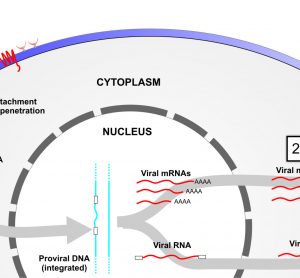RNAi-based therapies for the treatment of HIV
24 June 2010 | By Marc S. Weinberg and Fiona van den Berg, Antiviral Gene Therapy Research Unit, Department of Molecular Medicine and Haematology, University of Witwatersrand
Since the discovery of RNA interference (RNAi) in 1998 and the demonstration of RNAi in mammalian cells in 2001, research into the mechanisms and applications of this pathway has moved swiftly. RNAi is capable of mediating potent and specific silencing of genes and has therefore shown promise in the development…






